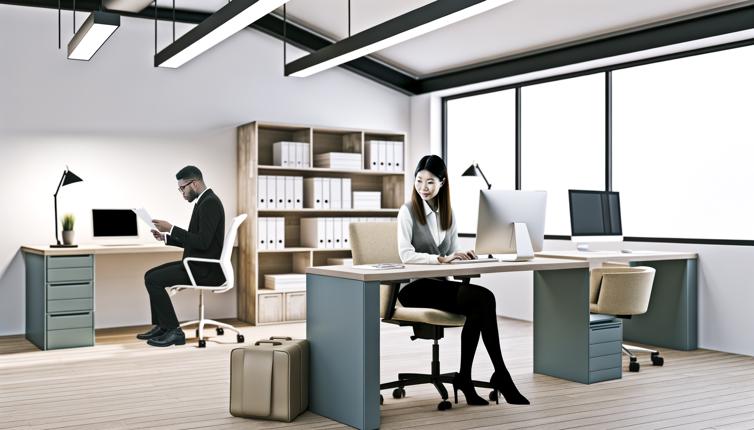Ergonomic Furniture
Investing in ergonomic furniture is one of the most important steps in creating a healthy and productive workplace. Ergonomic chairs and desks are designed to provide proper support and promote good posture, reducing the risk of musculoskeletal issues and promoting employee comfort.,When selecting ergonomic furniture, look for adjustable features such as height, backrest, and armrest positions. This allows each employee to find the most comfortable and supportive setup for their individual needs.,Additionally, consider investing in ergonomic accessories such as keyboard trays, monitor stands, and footrests. These accessories can further enhance employee comfort and reduce the risk of repetitive strain injuries.
Proper Lighting
Good lighting can have a significant impact on employee productivity and well-being. Natural light is ideal, as it promotes alertness and improves mood. If possible, position workstations near windows to maximize exposure to natural light.,In cases where natural light is limited, opt for bright, white LED lights that closely resemble natural daylight. Avoid harsh fluorescent lighting, as it can cause eye strain and fatigue.,Ensure that lighting is evenly distributed throughout the office space and that individual workstations have adjustable task lighting for specific tasks that require focused illumination.
Noise Control
Excessive noise can be a major distraction and hinder employee productivity. When selecting office equipment, consider noise control features such as sound-absorbing wall panels, carpets, and acoustic ceiling tiles.,Additionally, provide employees with noise-canceling headphones to create a quiet and focused work environment. Encourage respectful communication and establish designated quiet areas for tasks that require concentration.,Implementing soundproof meeting rooms can also help reduce distractions during important discussions and collaborations.
Conclusion
Selecting the right office equipment plays a crucial role in creating a healthy and productive workplace. Ergonomic furniture, proper lighting, and noise control measures are key factors to consider. By investing in these areas, employers can create an environment that promotes employee well-being, reduces the risk of musculoskeletal issues, and enhances overall productivity.









